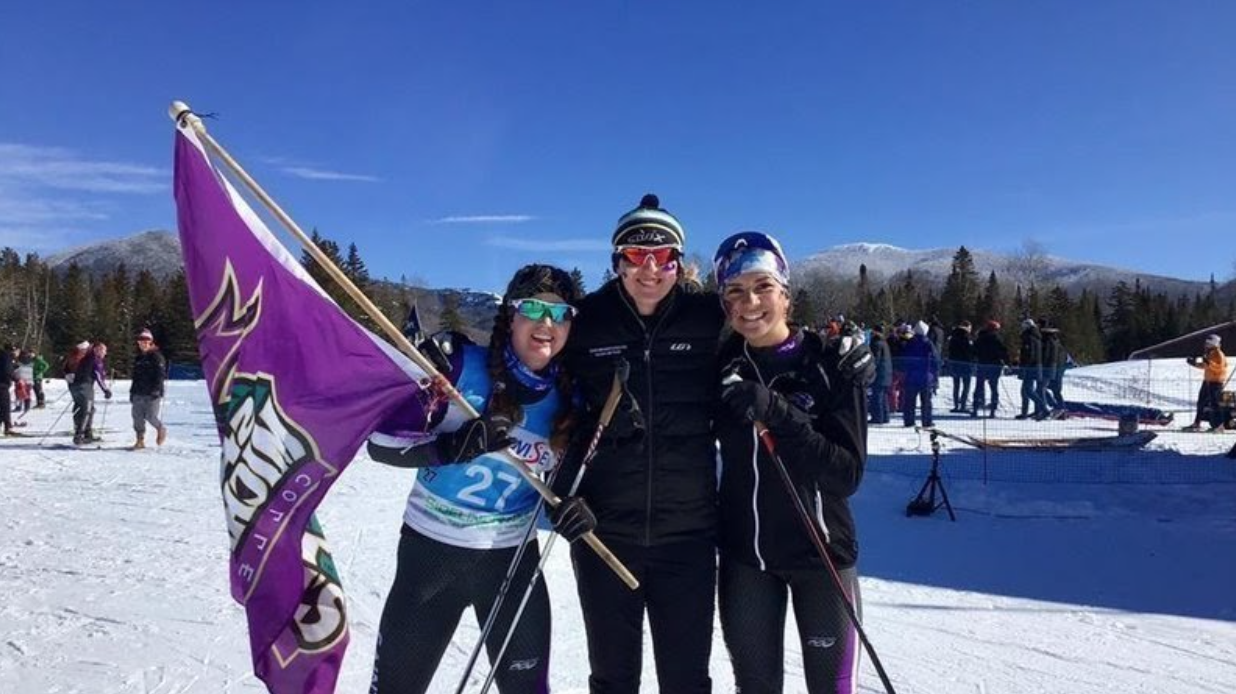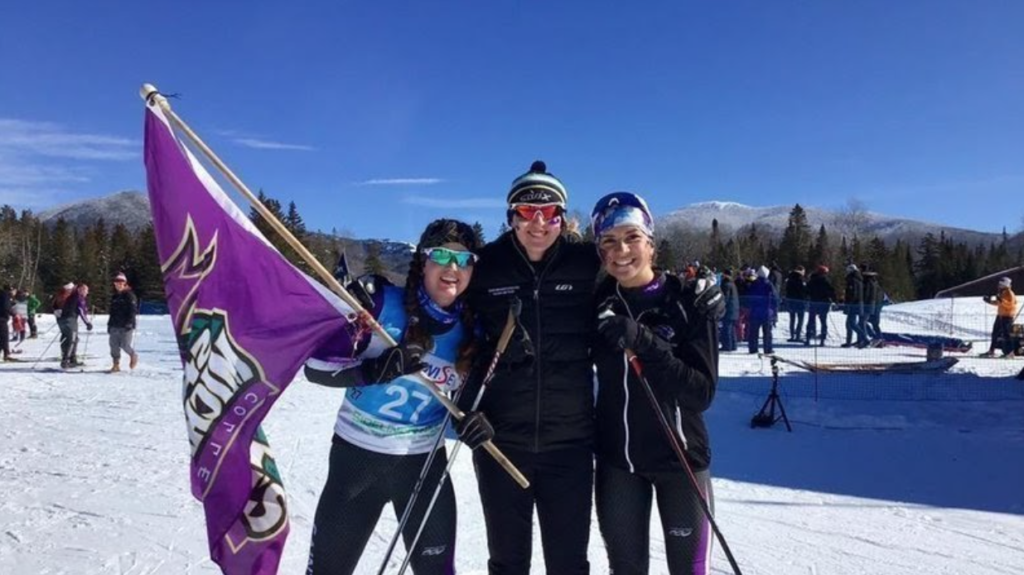
By Victoria Zambello
Executive Editor
For the first time in college skiing history, Nordic skiing will guarantee equal distances for men and women for this upcoming season. However, athletes will need to wait until next year to see this play out on the trails. On Dec. 15, the Northeast-10 Conference announced that all NE-10 winter sports and championships will be canceled, including Nordic and Alpine skiing, which is part of the EISA league.
In a typical Nordic skiing race, the men race 10 kilometers, whereas the women race five kilometers. In an average competition weekend, where there are up to two races varying in distance, women can end up racing 15 kilometers fewer than the men. Due to efforts made by Nordic Skiing and Cross Country Coach, Molly Peters, the upcoming schedule will guarantee equal racing distances for men and women.
Peters has been pushing for this decision for her nine seasons at Saint Michael’s College, with the recent support from her fellow coaches and athletes. “In college, I raced for Middlebury and graduated in ‘97. Even back then it always bothered me that the women raced five kilometers less than the men. When I became a coach, I decided that I had a platform to be able to bring attention to it,” said Peters.
The decision for unequal distances is based on tradition. For the Olympic level, the men’s events began in 1924 and the women’s side debuted in 1952. “In Norway, Sweden, and Finland, is where Nordic Skiing all started, and there was this belief that women aren’t as capable as men. They made the distances shorter because they didn’t think that women could handle the longer distances,” said Peters.
This reasoning is based on racing time disparities between the male side and women side. However, there is a bigger disparity within male participants than there is between men and women, explained Peters. Therefore, if the league was to create races based on these disparities, about half of the men’s team would also be racing the shorter distances, explained Peters.
“Initially, when I brought it up, it was met with a lot of people uninterested. They didn’t see why they needed to change it. I brought it up at the coaches’ meeting at least three times and was met with a no,” Peters said. With more time on her hands due to COVID-19, Peters decided to put all of her efforts into achieving equal distances.
With more than 400 petition signatures on Change.org in November, Peters decided the way for her to do so would be to publicly call these groups out.
“Tradition is not an excuse to continuously disregard inequity. Women race the same distances as men in virtually every other sport and are fully capable of racing the same distances in Nordic races. This is not fair and certainly not an equal opportunity that the Civil Rights Act and Title IX were created to protect,” Peters wrote in her petition on Change.org.
“At practices, we always ski together, we train together, we do the workouts together,” said Emma Bellefleur ’21, a member of the women’s Nordic Skiing team. “Racing is the only time that we aren’t, and we see a difference. I always saw it as normal and I didn’t know there could be a way to change it,” she said.

St. Michael’s Nordic Ski team competes in the Eastern Intercollegiate Ski Association, which includes schools such as Harvard, University of New Hampshire, Dartmouth, Middlebury, Saint Lawrence, and the University of Vermont. At the most recent EISA meeting, the Boating, Harvard, and Colby coaches spoke up about the unequal distances, leading to a league-wide decision to change the upcoming ski schedule to equal distance races. However, this decision is not finalized for future seasons, nor within the National Collegiate Athletic Association (NCAA).
“The training for guys and girls isn’t different, we put the same hours each week. It is cool to see that now, especially since the races will be similar, we can fully have the same training plans and we can push ourselves as a team together,” said Sam Heyliger ’23, a member of the men’s Nordic Skiing team.
A lot of this derives from the conversation around what does equal opportunity and equality qualify as.
“If you compare it to soccer, it’s like if you put the women on a smaller soccer field with smaller goals. The same idea with basketball if you lower the rim height. It just sends the wrong message. It makes them feel like they are not capable of doing what the guys are doing,” he said.
Peters said that her next project is finding equal distances for men and women in cross country, because men typically run 8-10 kilometers versus women who run 5-6 kilometers at the collegiate level.
“This is really awesome, but it took too long in my opinion for this to happen,” said Grace Erholtz ’23, a member of the Nordic Skiing team. “We are not done yet, because we don’t know if this will be a temporary decision or a final decision for the EISA. The distances still haven’t changed for the NCAA championships at the professional levels, so fingers crossed we can keep moving forward.”

